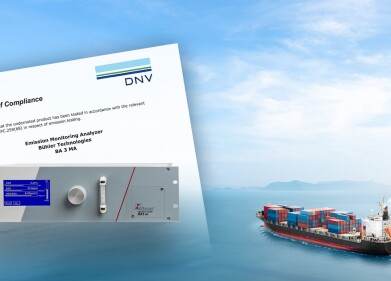Measurement and testing
What Does ASTM D287 Reveal About Petroleum?
Sep 03 2022
The characteristics of petroleum products can vary enormously depending on a myriad of factors. API gravity, an inverse measurement used to calculate how light or heavy a petroleum liquid is compared to H20, is one of the most important properties assessed. The index was created by the American Petroleum Institute and is a useful way to predict performance, assess suitability for different applications, determine quality and set market price.
While a variety of different methods can be used to calculate API gravity, ASTM D287 is one of the most widely used. The Standard Test Method for API Gravity of Crude Petroleum and Petroleum Products (Hydrometer Method) was developed in line with internationally recognised principles and is considered a gold standard technique.
Want to know more? Read on for a closer look at API gravity and how the ASTM D287 standard test method is used to calculate the weight of petroleum products compared to water.
Why API Gravity matters
Of all the parameters used to assess petroleum products, API gravity is one of the most important. Refineries rely on the index to determine suitability for infrastructure and make smart, informed decisions. Light crudes with high API gravity are generally more valuable as they’re compatible with most refinery equipment.
These types of crude oils are usually “sweet” and have a low sulphur content, with low concentrations of other contaminants. They offer higher yields and can be used to refine light products with good market value. Ultimately, crude oils with high API gravity are much easier to extract, pump, refine and transport.
Calculating API gravity
Most crude oil has an API of between 15 and 45 degrees. At the high end of the scale are light crudes, with API gravity of around 31 degrees or higher. Brent and West Texas Intermediate (WTI) are both classed as light crudes with API gravity of around 38 and 40, respectively. Medium crudes have an API range of between 25 – 35 while heavy crudes can be as low as 15 – 25. Anything under 15 degrees is classed as extra-heavy and will be difficult to refine.
Drawing the “light” line
Anything with an API gravity of above 45 degrees falls into the extra-light or condensate category. Despite the high API gravity, these products are less valuable as they contain high concentrations of light hydrocarbon gases and liquids, such as butane and propane.
API gravity isn’t the only parameter used to assess the quality of petroleum products. We spotlight other important properties, including flash point, boiling range distribution and elemental concentrations in ‘Petroleum Testing - A Comprehensive Guide.’ Or check out 'Recent advances in testing the lubricity of diesel fuel' for a more in-depth look at lubricity testing in particular.
Digital Edition
PIN 26.1 Feb/Mar 2025
March 2025
Analytical Instrumentation - Elemental Analysis for Quality and Process Control at Refineries, for Lubricants and Wear Metals in Engine Oils - Synthetic Lubricants: New Developments - Scaling...
View all digital editions
Events
Apr 08 2025 Birmingham, UK
Apr 08 2025 Kielce, Poland
Apr 08 2025 Ravenna, Italy
Apr 08 2025 Southampton, UK
Apr 08 2025 London, UK



















